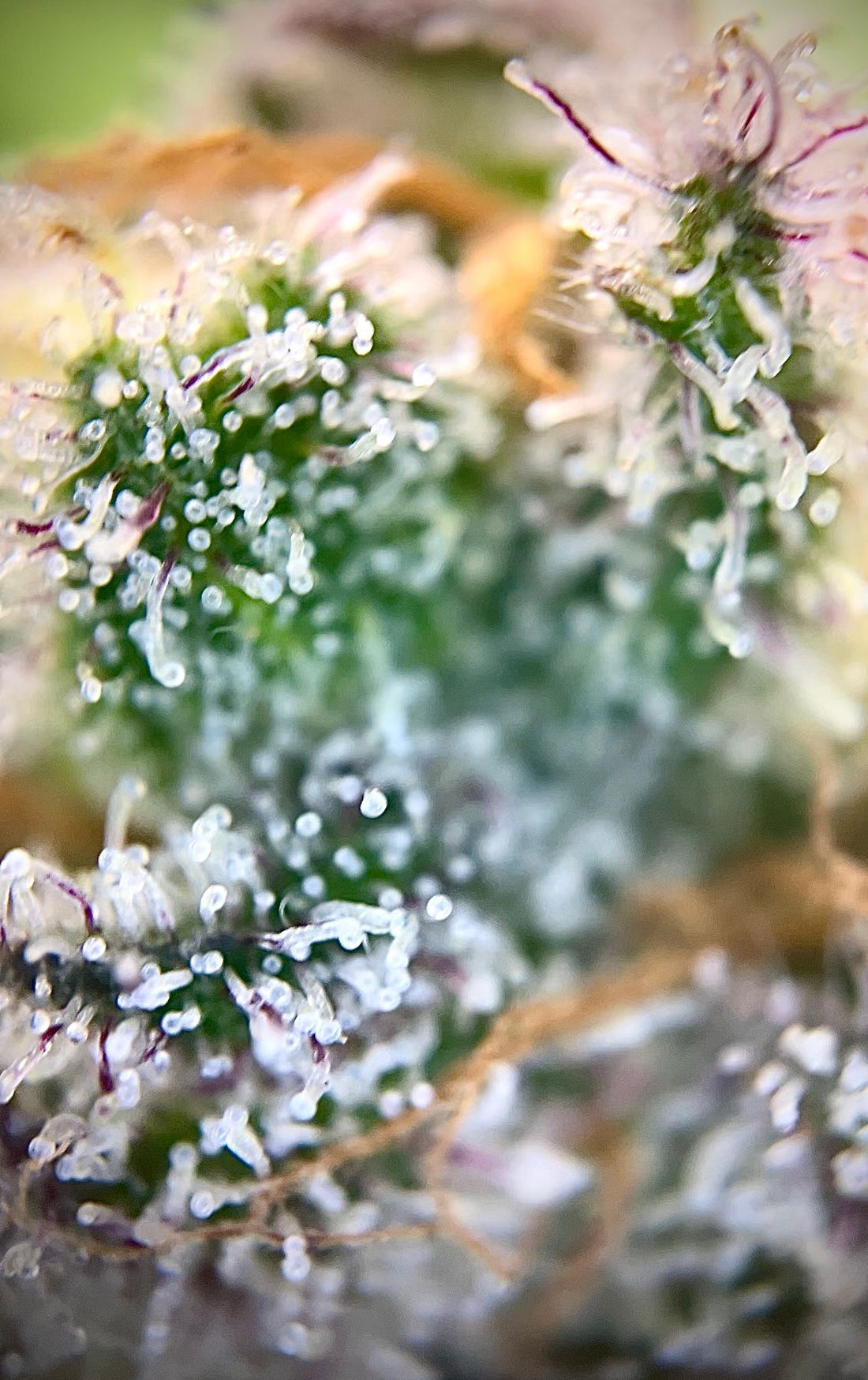
Trichomes: Simply Explained
Share
Trichomes: The Tiny Powerhouses of Cannabis, Explained Simply
Imagine you’re standing in a field of cannabis plants, the sun shining brightly, and as you get closer, you notice the plants are covered in a sparkling, crystal-like frost. Those tiny, shimmering structures are called trichomes, and they are the key to understanding the potency, flavor, and overall experience of cannabis. But what exactly are trichomes, and why are they so important? Let’s dive into the fascinating world of trichomes, explained in a way that anyone can understand—no science degree required!
What Are Trichomes?
Think of trichomes as the tiny factories of the cannabis plant. They are microscopic, hair-like structures that grow on the surface of the plant, particularly on the flowers (buds), leaves, and even stems. These little powerhouses are responsible for producing and storing the compounds that give cannabis its unique effects—things like cannabinoids (THC and CBD), terpenes (which provide aroma and flavor), and flavonoids (which contribute to the plant’s color).
To put it simply, trichomes are where all the magic happens in the cannabis plant. Without them, cannabis would be just another green plant without any of the qualities that make it so special.
The Science Behind Trichomes
Now, let’s break it down a bit further. Trichomes are composed of three main types:
- Bulbous Trichomes: These are the smallest and least complex, often too tiny to see with the naked eye. They cover the entire plant but are most concentrated on the flowers.
- Capitate-Sessile Trichomes: These are slightly larger and have a stalk and a head. They are responsible for producing some cannabinoids and terpenes.
- Capitate-Stalked Trichomes: These are the ones you’re most likely familiar with. They are larger, more abundant, and contain the highest concentration of cannabinoids and terpenes. These are the trichomes that give cannabis buds their frosty appearance.
Each of these trichomes plays a vital role in the plant’s defense system. In nature, trichomes protect the plant from predators (like insects) and environmental stressors (like UV rays). They do this by producing bitter-tasting compounds that deter herbivores and by creating a sticky, resinous surface that traps pests. It’s like the plant’s natural suit of armor.
Why Are Trichomes So Important?
For cannabis enthusiasts, trichomes are incredibly important because they determine the quality, potency, and overall experience of the cannabis. Here’s how:
- Potency: Trichomes are where cannabinoids like THC and CBD are produced. The more trichomes a plant has, the more potent the cannabis will be. This is why high-quality cannabis is often described as “frosty” or “crystal-covered”—it’s loaded with trichomes.
- Flavor and Aroma: The terpenes produced by trichomes are responsible for the wide variety of flavors and aromas in cannabis. Whether you’re enjoying a strain with a citrusy zing, a piney freshness, or a sweet berry flavor, you have trichomes to thank for that.
- Medicinal Benefits: Trichomes also produce other compounds that contribute to the medicinal properties of cannabis. For example, some trichomes produce flavonoids, which have antioxidant properties and contribute to the plant’s therapeutic effects.
How to Recognize the Perfect Trichome
As cannabis flowers mature, the trichomes go through changes that can tell you when the plant is at its peak for harvesting. This is where things get really interesting!
- Clear Trichomes: When trichomes are clear, it means the cannabinoids are still developing. Harvesting at this stage might result in less potent cannabis.
- Cloudy or Milky Trichomes: This is the sweet spot for harvesting. Cloudy trichomes indicate that the cannabinoids have reached their full potential, and the effects will be at their peak. Cannabis harvested at this stage is typically more potent and has a balanced effect.
- Amber Trichomes: As trichomes age, they start to turn amber. This means the THC is beginning to degrade into CBN, which has a more sedative effect. If you’re looking for a more relaxing, body-heavy experience, harvesting when a portion of the trichomes have turned amber might be ideal.
Enhancing Trichome Production
If you’re growing your own cannabis, you might be wondering how to maximize trichome production. Here are a few tips:
- Lighting: Proper lighting is crucial. Full-spectrum LED lights are often recommended because they mimic natural sunlight, helping trichomes develop to their fullest potential.
- Stress: Controlled stress, like slightly lowering the temperature during the flowering stage, can encourage trichome production. It’s like the plant’s way of toughening up, which results in more resin.
- Nutrients: Ensuring your plants have the right nutrients, particularly during the flowering stage, can also boost trichome production. Some growers use supplements specifically designed to enhance resin production.
Conclusion: The Power of Trichomes
In summary, trichomes are the tiny but mighty powerhouses of the cannabis plant. They produce the compounds that make cannabis unique, from the high-inducing THC to the aromatic terpenes. Understanding trichomes is key to appreciating the quality and effects of cannabis, whether you’re a grower, a consumer, or just a curious enthusiast.
So next time you admire those sparkling crystals on your buds, you’ll know that you’re looking at the very essence of cannabis itself. And remember, the more you know about trichomes, the better you can appreciate the art and science behind every puff.
When do you think the best time is to harvest your plants? Let me know in the comments!
